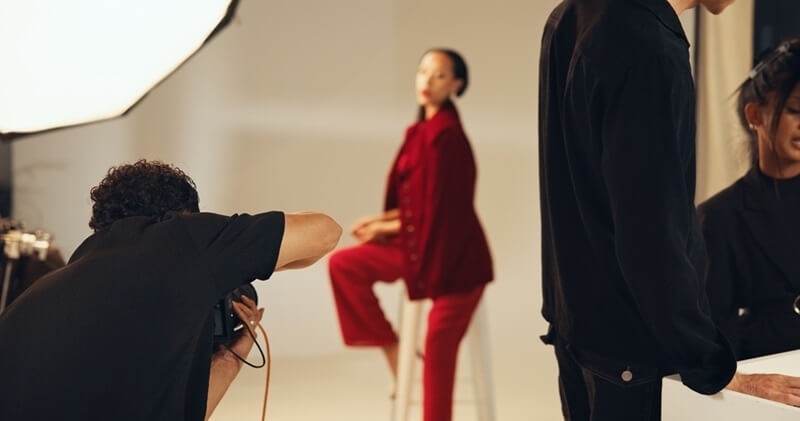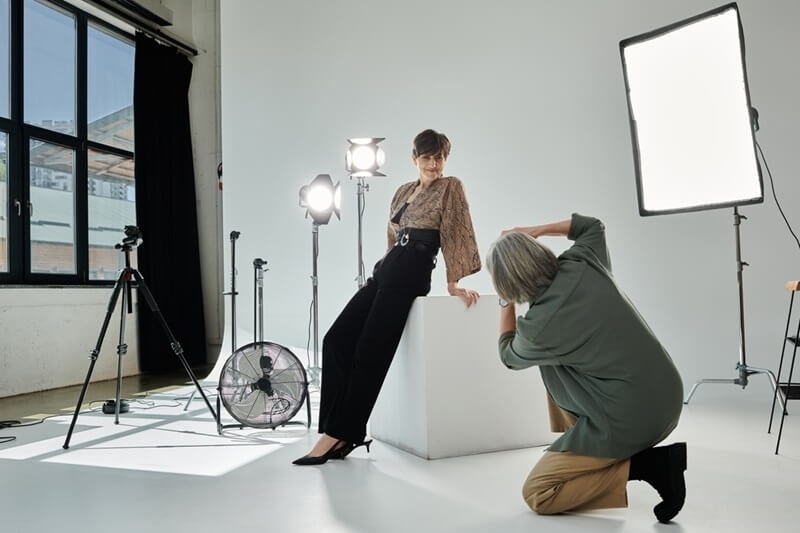
When you look at a fashion magazine or a designer campaign online, the photos that really interest you are intentionally created. They all have the creative side, technical skill, and the detail-oriented aspect working together. Fashion photography doesn't simply mean snapping pictures of the latest trends but rather it involves developing the ideas, demonstrating feelings, and presenting the style in the most eye-catching way possible.
Whatever your level, a few essentials that professionals use can be a great help and will give you results that look like those of shooting in a magazine.
Fashion photography is the art of revealing the use of clothes, accessories, and style in general through the power of pictures. The method uses art, design, and narrative to highlight fashion in the most attractive way. This kind of work is not like normal photos of people, which require an understanding of trends, lights, and composition.
Fashion photography itself has different kinds of styles starting from luxurious editorial ideas to straightforward lifestyle visuals. The different types have their own beats and reasons, but all work towards making fashion the most memorable and motivating.
Resisting the temptation to just take the camera and start shooting is the first step to a fashion shoot's success. It is the planning that will bring the concept, wardrobe, and the technical side together in the perfect way. The first thing to do is to know what the project looks like, whether the result has to be a clean, contemporary style or a soft, fairy-like one.
Before the shoot, remember these:
Good timing and preparation are what motivate a team and simultaneously prove that the job runs smoothly from the very beginning till the end.

In fashion photography, the power to give instructions and a pose to your models is very important. Fashionable clothing might not get the attention it deserves if the pose doesn't show the right attitude or vitality. Connecting with the models not only helps you but also is their way of existence.
Help your models get through more movement as well as more feeling—telling them to walk, twirl, or change angles a little. Ask them to be bold and bring out their traits in each photo. The slightest differences in body language or face can implicitly change the whole character of an image.
In order to correct posing and, at the same time, be impactful, establish confidence with your models, when, for instance, they feel at ease, their gestures become more natural, thus allowing your pictures to be done with little effort but not losing the impact.
The studio gives you full power over the lighting and background, and is thus the reason why studio fashion setups are considered to be perfect for editorial or high-end campaigns.
To get your studio ready:
One of the benefits that comes with a studio shoot is that you are not limited to certain things, so you can experiment. Change your lights, angles, and the distance of your camera from the subject until you find the setting that matches your story best.
Lack of proper lighting can result in photos of fashion that are not up to par but with proper lighting guides, it can be fashion lighting guides convert such photos into extremely good ones. Having a fashion lighting guide is very essential as it shows how the light is in interaction with fabrics, textures, and skin tones.
There are three central lighting styles:
The direction from which the light comes must also be considered. For example, side lighting helps to extract the volume of the object, while backlighting causes it to have a halo effect. Always check your light angles to be sure that no unwanted shadow or highlight is present.
Although studios provide the opportunity to have everything under control, outdoor fashion photoshoots are energetic and full of movement. Besides, natural light can make clothes look more trendy and lively.
Choose locations that fit the fashion story you want to tell—a deserted street for minimalism or a bright landscape for drama. Plan your shoot during the golden hour in order to take advantage of warm, soft tones. Always be prepared to change your plans due to weather or lighting conditions.
The wind, for example, that is a part of nature, can make your pictures better if you use it in a creative way. Keep an open mind and be aware of the way the surroundings connect with your model and outfit.
Though a Stylist usually leads the wardrobe planning, photography styling tips can be a good helper for you if you want to get better shots. As a photographer, you should realize that color, texture, and details play an important role in a great shot. Some of the styling tips are:
By focusing on style, you lessen the time spent on editing and the final images look clean and professional.
Composition is what holds your shot together. It is the thing that makes bigoted or ordinary shots out of the pictures taken by fashion photography.
Change your shooting angle and view radically. Visual attractiveness can be boosted by the rule of thirds and in addition, the use of negative space can make the picture more elegant. The use of guide lines constructed by the human eye or buildings can be utilized to help the viewer to turn his/her view to the model or the clothes.
By including both wide shots and close-ups in your work, you can sustain an appealing visual effect. Each composition can be considered as a chapter of your fashion story that is told through pictures, and therefore, you should be very careful which one to choose next.
Editing is the stage when the artist perfects their creation and gives it the final shining effect. It should be used to set the mood that is already there rather than to create an entirely new one.
One should modify color tones so that they are accurate, retouch the skin carefully, keeping the texture intact, and balance the contrast to give the photo more dimension. Very soft vignettes and subtle highlight changes are also some of the techniques that can be employed to make a picture “pop”.
Heavy filters should be kept at bay. This is the reason why images that look as if they could be from a magazine still have a natural finish. A well-done, balanced edit always has a timeless feel.
It takes time and a lot of effort to master the art of fashion photography, but with every session, you evolve. So whether you are practicing how to pose models, arranging eye-catching studio fashion setups, or trying your hand at outdoor fashion photoshoots, each of these moments is a step forward in your professional growth.
With an attention to detail, one can produce fashion in its rawest essence, confident, stylish, and worthy of the pages of a magazine.
This content was created by AI